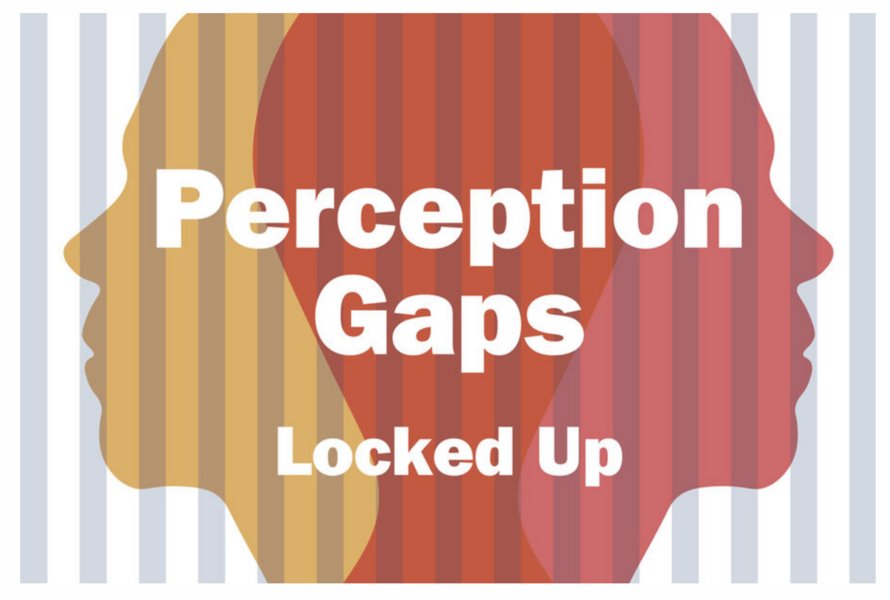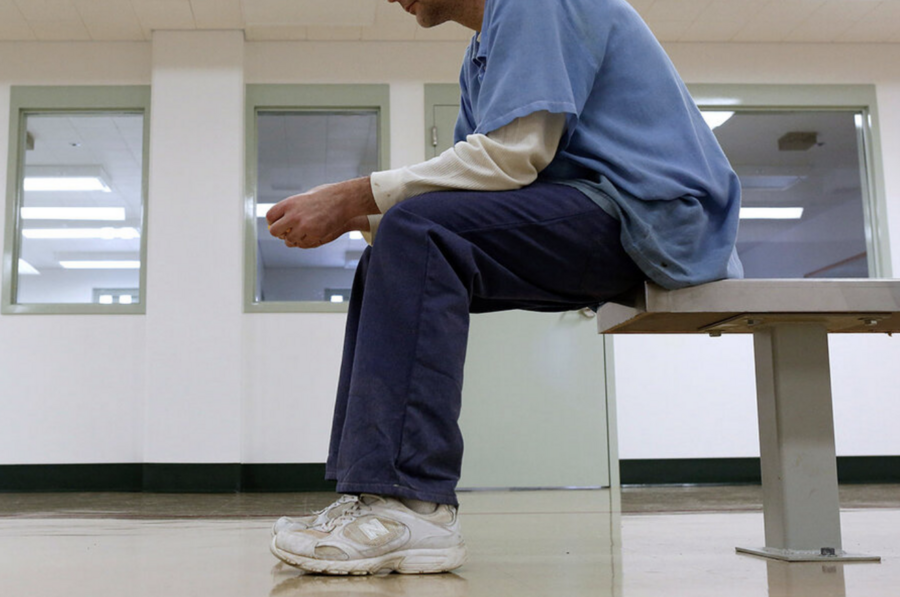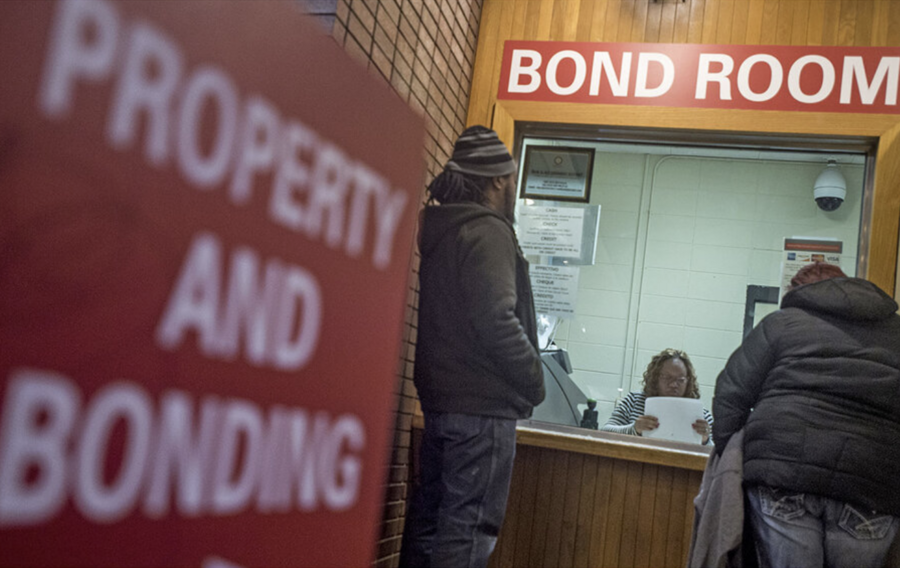Rethinking perspectives on American criminal justice
Loading...
The “counternarrative” is a cornerstone of Monitor journalism. These are stories that challenge assumptions. And, they change perceptions.
At the Monitor, Samantha Laine Perfas is a master of the counternarrative. Sam is the digital story team leader who launched our popular Perception Gaps podcast last year. That series looks at everything from guns to political polarization and explores what happens when what you think is true doesn’t line up with reality.
Now Sam’s back with the podcast’s second season: Perception Gaps: Locked Up. She’s joined by two other reporters on our staff: Washington-based Jessica Mendoza, and Henry Gass, who covers criminal justice and other issues from Austin, Texas.
This season, the Perception Gaps team dug deep into misconceptions about a single topic: the American criminal justice system and what can be done to make it more effective and fair.
One sobering statistic in the series: 74% of all people in U.S. jails today haven’t been convicted of a crime. I spoke with Sam, Jessica, and Henry recently and began by asking them what other elements of the criminal justice system might surprise readers – or challenge their assumptions about innocence and guilt.
SAMANTHA LAINE PERFAS: One of the biggest things that surprised me was how we believe the justice system to be fair and just, but in many ways, it’s not. We often think that if you do something wrong, you will then go through a system that will treat you fairly, follow an “innocent until proven guilty” framework and that the punishment will be appropriate for the crimes committed. That’s simply not true. There are many people who are locked up that have not been convicted of a crime, and there are hundreds of thousands of Americans with criminal records simply because they took a plea deal to avoid being incarcerated pretrial.
HENRY GASS: The power prosecutors have is one thing that would surprise people. There’s just lots of discretionary power there, and they usually have a big advantage in terms of resources over the people they’re prosecuting. The decision on which charges to file, or even whether charges are filed, are the decisions that animate the justice system, and prosecutors make those decisions all the time with few restraints. Once a prosecutor has made that call then all you can do is fight them in court.
Corrections officers are a big one as well. Their opinions and interests aren’t very well-publicized, and their portrayals in popular culture are overwhelmingly negative, so I think people would be surprised to learn how dehumanized they can feel in that job.
JESSICA MENDOZA: What struck me was the diversity of experiences and backgrounds among those who’ve been touched by the justice system. We have so many stereotypes about who commits crimes, what kinds of crimes are often committed, what it looks like in courts and in jails and prisons. But hearing from people who’ve been there – whether it’s those behind bars, those with friends and family who’ve been incarcerated, corrections officers, crime victims – made me realize that many more of us are affected by the system than we tend to assume.
The first season of Perception Gaps focused on many different topics from the opioid crisis to immigration. Why did you focus all six episodes of season two on the criminal justice system?
SLP: After completing the first season, one piece of feedback we received was that devoting only 30 minutes to each topic seemed too short. Our listeners said that given the choice, they would prefer to go deeper into issues rather than learn only a little about many different topics. So we listened! We decided to focus the entirety of Season 2 on the justice system. The United States locks up more people than any other country in the world, and it’s an issue that affects every American in ways they may not realize. We wanted to shed light on this vast institution, and allow people to acknowledge and address some of the misperceptions they had about the system.
You worked mostly on your own on the first Perception Gaps series, but the 2nd season was a team effort with Henry Gass and Jess Mendoza, what strengths did that bring to the series, that one solo reporter couldn’t.
SLP: Working with Jess and Henry on this series was an incredible experience. Henry has reported on the justice system for years for the Monitor and has a really good understanding of the system’s nuances. Many of the sources we interviewed throughout the series were academics, formerly incarcerated individuals, and professionals that Henry has met throughout his reporting career. Jess, who used to work on our politics team in DC, brought critical political expertise to our reporting, knowing the right questions and areas to explore when discussing policy. With my knowledge from reporting the first season, we truly were a power team. It was an incredible group effort and allowed us to cover more ground than any one of us could’ve done alone.
JM: This was the first truly collaborative big project I’ve worked on for the Monitor that really pulled from each of our strengths in meaningful ways. It was different, and somehow more organic than partnering with a photographer for a big piece or sharing a byline with a colleague for a story you both made calls for. Locked Up needed Henry’s expertise with the justice system, his knowledge of the issues, and the sources. It needed Sam’s experience with audio storytelling, which is truly a different animal than print. It also needed her project management skills, because there were a thousand things that needed to be done to get this off the ground before, during, and after reporting and producing that had nothing to do with the content of the piece. And I like to think it needed my sense for narrative writing – for taking seemingly disparate pieces and turning them into a story with a beginning, middle, and end – and my passion for learning how to produce and tell stories through audio.
HG: It helped me to work with two colleagues, Jess and Sam, who had less experience covering the criminal justice system. When you report on this stuff day in, day out, it’s easy to forget that most readers may not know that prisons and jails are different things, for example, or that most immigrant detention facilities aren’t actually staffed and operated by ICE. Having them serve as a kind of proxy for the casual listener with less knowledge of the justice system helped make the series more accessible, I think.
Sam, you work primarily in audio journalism. What does audio bring to the table that a well-reported text and photo story doesn’t?
SLP: I have come to love and embrace audio storytelling in a way that I would never have predicted. I was trained as a long-form print journalist and always thought that writing would be my bread and butter. But when I ventured into the audio landscape, I realized the power of speaking directly to our audience, and the power of giving our sources a platform to share their stories directly with the world. There’s something different about hearing someone’s story in their own words. There’s power in listening to them, hearing their voice crack as they share something painful, but also hearing the hope in their voice as they continue to push progress forward. That intimacy is really difficult to capture in print.
JM: There’s still so much for me to learn and so much I’m coming to understand about the ways that audio is different from print: where its storytelling power lies, how to use it most effectively, what skills I need to hone and gain to become a better reporter for audio. Locked Up was essentially my first dip in that pool. I realized I had to re-learn how to write for sound and to plan and interview for audio. I knew it was going to be different than what I was used to, but I was still surprised at how different it was, and at which print skills wound up being useful and which were more of a hindrance. But it’s incredibly exciting. I’m very glad the Monitor is willing to give this kind of storytelling space and support.
The numbers are pretty devastating in terms of the damage the U.S. prison system has done to human lives - both for those in prison, and the families affected by someone behind bars. Are there any signs of progress that you and the team uncovered during the series?
HG: Yes I’d say there’s progress happening. The overall feeling that the tough-on-crime era wasn’t the best approach to achieving public safety and justice is being accepted by more and more people across the ideological spectrum. As ever though, the devil is in the details, and there is a fundamental fear of rapid change in this space that I think will be really difficult -- maybe impossible -- to overcome. Reforming a system responsible for some of our society’s most violent and dangerous people is understandably a system that many people are only willing to change slowly. There is broad support for reform, I just think it’s going to happen slowly and incrementally.
JM: The system is still pretty opaque, and there are still a lot of issues to deal with. But in meaningful ways, we’ve moved from totally dismissing the experience of incarceration to being willing to talk about the issues that exist and to find ways to address them. Opportunities are still restricted for people with criminal records, but more employers are open to hiring folks who were previously incarcerated. There are a lot of these small but important steps that are happening in many different parts of the justice system. These things aren’t really big-P “progress,” but they show that the work of decades is making a difference.
SLP: I would encourage everyone to listen to Episode 6 of Season 2! But essentially, we see a lot of progress happening at the local level. So much of the justice system operates in our own neighborhoods and cities. Different states have experimented with various models that show tremendous potential. And there are also new models and approaches being experimented with internationally. All of these initiatives create opportunities to learn about what works and what doesn’t and might help the U.S. reimagine how it achieves justice.
With all the interviews you and the team did for this series was there one person that sticks out for you - has made a lasting impression on you?
SLP: Jennifer Bishop Jenkins, a victims rights advocate, was featured in Episode 5. Her sister and brother-in-law were murdered by a teenager, and it was a terrible tragedy that defined her life. Even as she experienced this trauma and continues to fight for the rights of other victims, she still operates with empathy and compassion for the perpetrators of violence. The fact that she can hold her own pain while also recognizing the humanity of others is truly inspiring, and something that I hope we can all carry with us.
HG: She has such a tragic and compelling story, and she told it to us in such a powerful way, I don’t think I’ll ever forget it. And then to hear her perspective on how powerless crime victims and their families often feel -- how elusive real justice can feel for them, and how traumatizing the machinery of justice can be for them -- was eye-opening.
JM: As a young teenager, Jeremiah Bourgeois was sentenced to life in prison for homicide. He told us about his awful early years, the trauma of a friend committing suicide behind bars, and his struggle to get a college degree. After a Supreme Court ruling eventually led to his release after 25 years inside, Jeremiah’s dedicated his life to giving voice to what incarceration looks like.
The Perception Gaps - Locked up podcasts are available on Apple Podcasts, Spotify, Google Podcasts, and Stitcher. Or you can visit the Perception Gaps home page for more background information and all of the podcasts.










